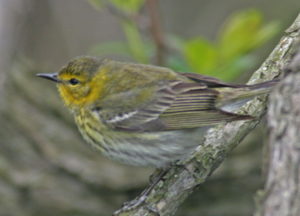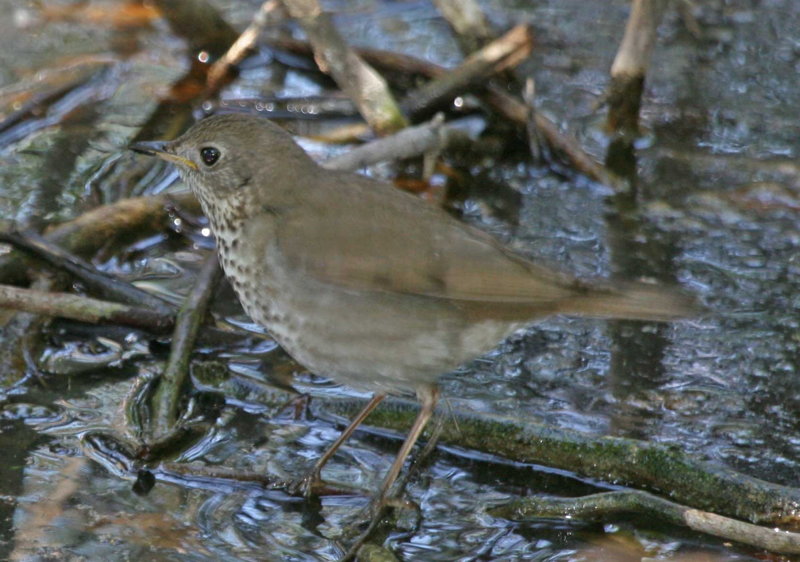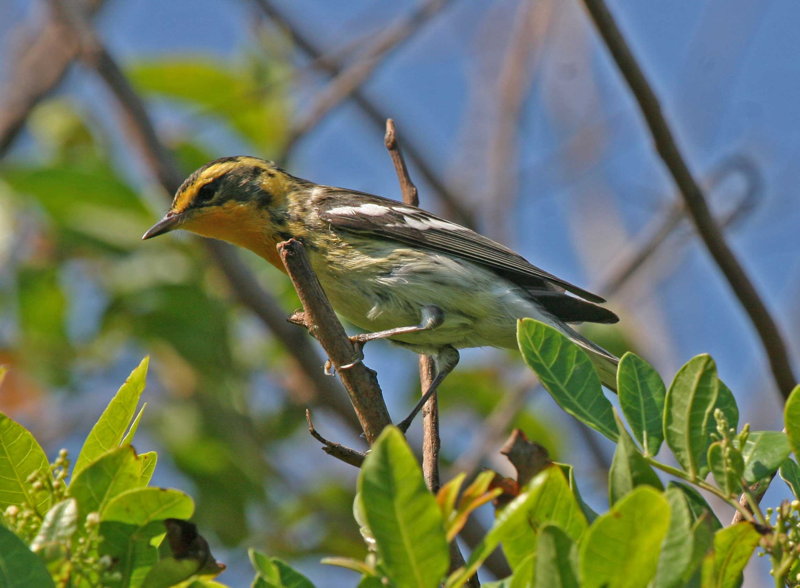
Cape May Warbler, photo by Tom Heindel
Why does this happen? Why don’t all of “our” birds stay here all year? There are many factors to consider but the two more important are food availability and cover. Many migratory species depend heavily on insects and fruits, both in low supply during our cold, northern winters. This is also when deciduous vegetation is leafless and cover is more difficult to find.
Now that you’ve had a few months to become comfortable in identifying our wintering species, it is time to say good-bye to the Rough-legged and Ferruginous Hawks, Merlins, Northern Shrikes, and Longspurs, and hello to the dozens of neotropical migrants.We once asked the top birder in the state, Guy McCaskie, how he keeps all the identification information in order and he said, “I constantly review!” So, let us review some of the groups we may want to study before they arrive since “Success occurs when opportunity meets with preparation!”
One advantage with spring migrants is that most species are returning all dressed up in the bright plumage shown in all field guides making identification much easier than in fall when most are wearing their drab garb.
The Eastern Sierra has recorded 44 species of warblers, but in winter typically only Orange-crowned and both Yellow-rumped (Audubon’s and Myrtle) Warblers occur. Soon our regular spring warblers will begin arriving and mixed in will be ‘vagrants’, those species who lost their way and will be found where they aren’t supposed to be! Will you be prepared to identify a Cape May, Tennessee, or Magnolia Warbler? The names are clues as to where they were supposed to go!

Magnolia Warbler, photo by Tom Heindel
Flycatchers are a large group, poorly represented in the Eastern Sierra in winter…because they eat ‘flies’ and other insects. No bugs, no bug catchers! Of the 23 species recorded here, only the Black and Say’s Phoebes and occasionally the Vermilion Flycatcher occur in winter, but on the horizon are pewees, kingbirds, and Empidonax and Myiarchus flycatchers.
Of the eight species of hummingbirds, only Anna’s and Costa’s Hummingbirds, are recorded in winter. Are you going to distinguish an Allen’s or Ruby-throated Hummingbird at your feeder? The Allen’s would be new to Inyo County and the Ruby-throated would be the second record. All six species of orioles vacate the Eastern Sierra in winter. How do you distinguish a female Orchard Oriole from a female Hooded Oriole? Or a Gray-cheeked Thrush (one record in Kern and none in Inyo) from a dull Swainson’s Thrush? Or female (males are easy) Blackburnian Warbler? Or a Mourning Warbler from a MacGillivray’s Warbler?
Of the 13 gull species that have occurred here only Ring-billed and California Gulls can be seen in winter. Are you ready for the other 11 species? Will you be prepared for the first county record of Little Gull instead of assuming that it was a Bonaparte’s Gull? It has been recorded at Crowley Lake and China Lake…and it didn’t fly due west or east to avoid Inyo County! Of the six tern species none are found in winter. Will you be able to distinguish the rare Arctic Tern from the more common Forster’s and Common Terns? All 11 vireos are gone in winter. Are you going to pull the first county record of Yellow-green Vireo? Three have been recorded in Kern County and unquestionably the species has occurred in Inyo County but a prepared birder didn’t cross paths with one.There are a few weeks before Pandora’s Bird Box opens…and it will open. Will you be prepared? You get the picture! In fact, for any new Inyo County record you will need a picture!
Tags: hawk, kingbird, oriole, thrush, warbler





